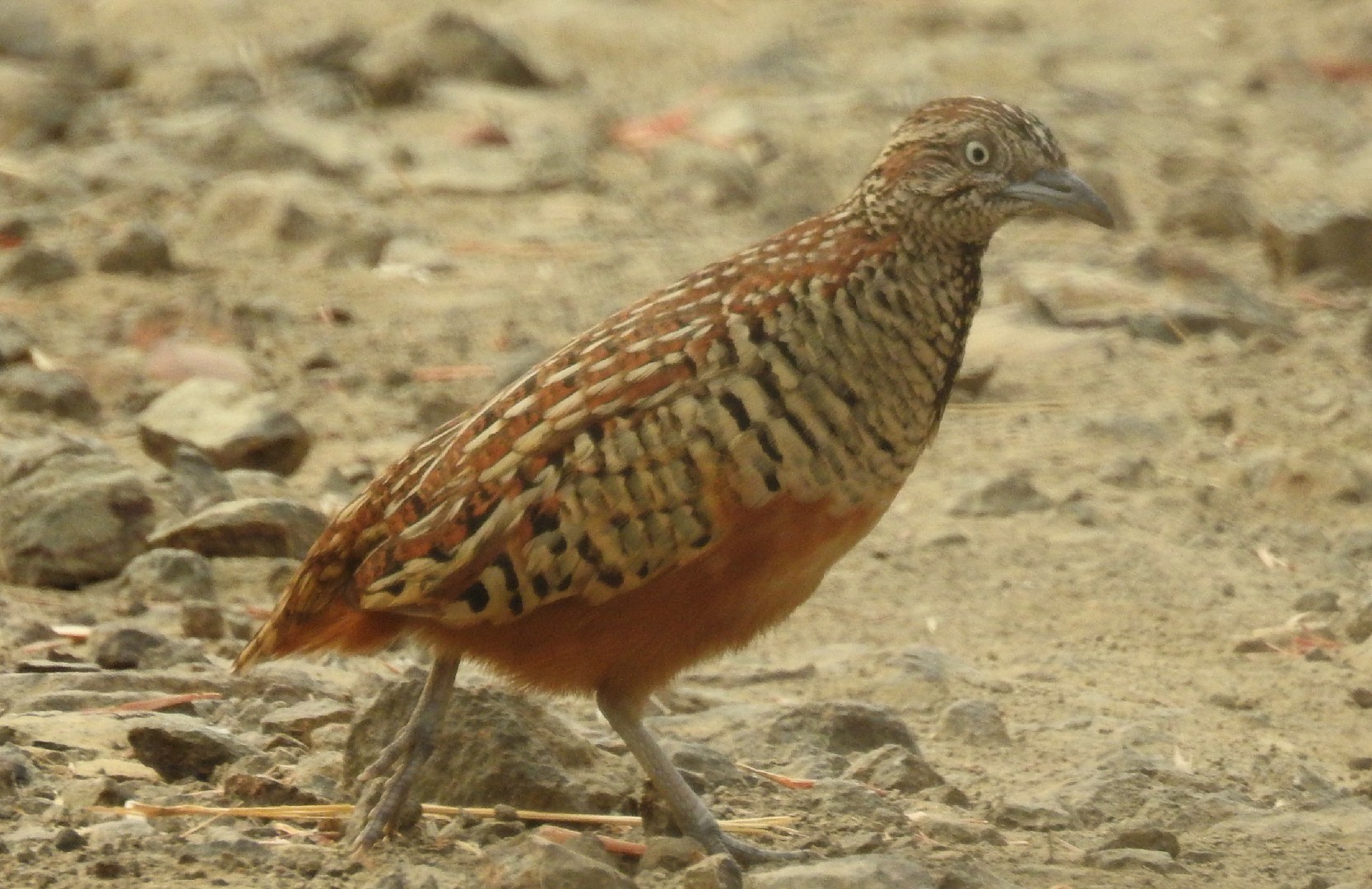Barred Buttonquail
A species of Buttonquail Scientific name : Turnix suscitator Genus : Buttonquail
Barred Buttonquail, A species of Buttonquail
Botanical name: Turnix suscitator
Genus: Buttonquail
Content
Description General Info
 Photo By Dr. Raju Kasambe , used under CC-BY-SA-4.0 /Cropped and compressed from original
Photo By Dr. Raju Kasambe , used under CC-BY-SA-4.0 /Cropped and compressed from original Description
A typical little buttonquail, rufous-brown above, rusty and buff below. Chin, throat and breast closely barred with black. Female larger and more richly coloured, with throat and middle of breast black. The blue-grey bill and legs, and yellowish white eyes are diagnostic, as are also the pale buff shoulder-patches on the wings when in flight. Absence of hind toe distinguishes Bustard and Button quails from true quails. Pairs, in scrub and grassland. The calls are a motorcycle-like drr-r-r-r-r-r and a loud hoon- hoon-hoon. 
Size
18 cm
Nest Placement
Ground
Feeding Habits
Barred Buttonquail primarily feeds on grass and weed seeds, invertebrates, and green shoots. They forage terrestrially, creating circular scrapes in mulch and leaf-litter and using well-defined trails to commute to feeding sites. Often found alone or in pairs, barred Buttonquail may forage nocturnally in certain regions.
Habitat
The barred Buttonquail inhabits diverse environments, predominantly within grasslands, agricultural lands with crops such as sugarcane, coffee, and tea plantations, and abandoned fields. It is also found in areas of secondary growth, scrubland, bamboo thickets, and along the fringes of forests, usually on sandy soils and frequently in proximities to water bodies. These birds typically prefer lowland areas.
Dite type
Granivorous
General Info
Feeding Habits
Bird food type
Distribution Area
The species occurs throughout India up to elevations of about 2500 m in the Himalayas, Sri Lanka, Bangladesh, Burma, Indonesia, the Philippines and most of Southeast Asia. There are four geographical races that differ somewhat in colour. Within South Asia, it is known by many local names: Sansorai (Assam); Daoduma (Cachar); lnruibuma (Kacha Naga); Vohbubum (Kuki); Simokpho (Lepcha); linisk (Bhutea); Gulu, Gundra, Gundlu, Salui gundra (Hindi); Gulu (Bengal); Kalada - male, Pured - female (Telugu); Ankadik - male, Kurung kadik - female (Tamil); Durwa (Ratnagiri); Karechakki (Kannada); Bala watuwa (Sri Lanka). Found in most habitats except dense forest and desert, in particular, scrub jungle, light deciduous forest and farmlands. Widespread and common throughout its large range, the barred buttonquail is evaluated as Least Concern on the IUCN Red List of Threatened Species. 
Species Status
Not globally threatened.
Scientific Classification
Phylum
Chordates Class
Birds Order
Shorebirds Family
Hemipodes Genus
Buttonquail Species
Barred Buttonquail